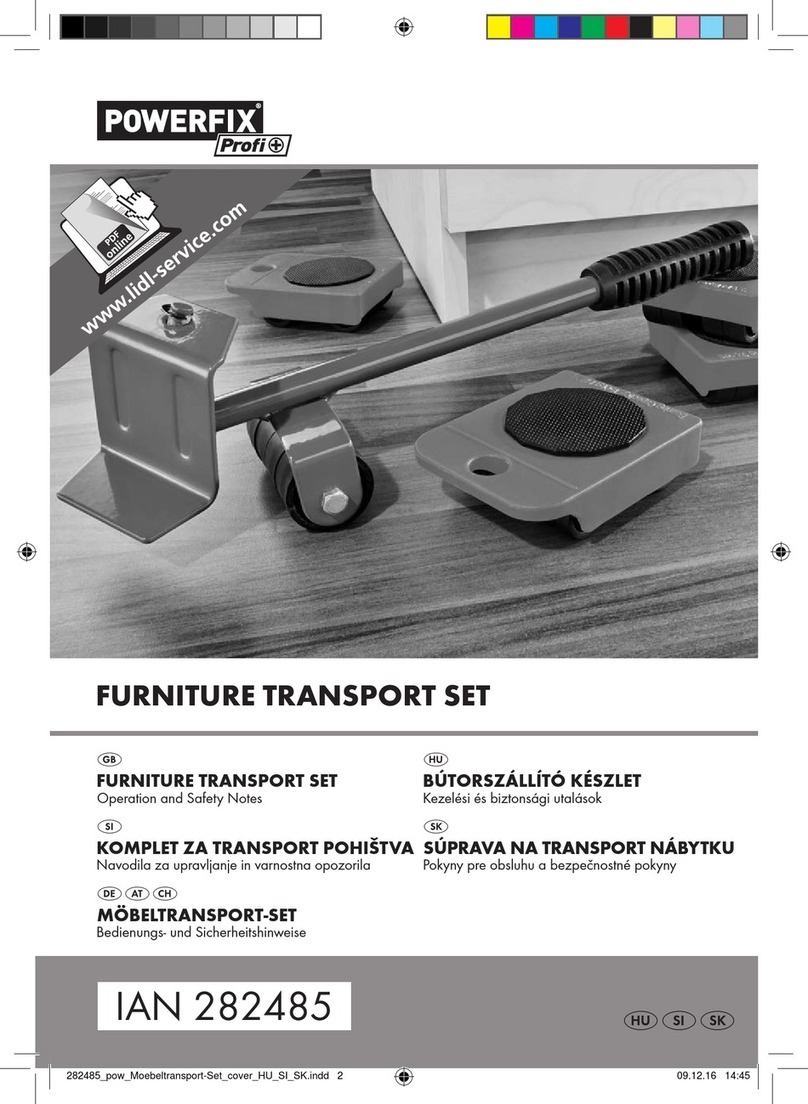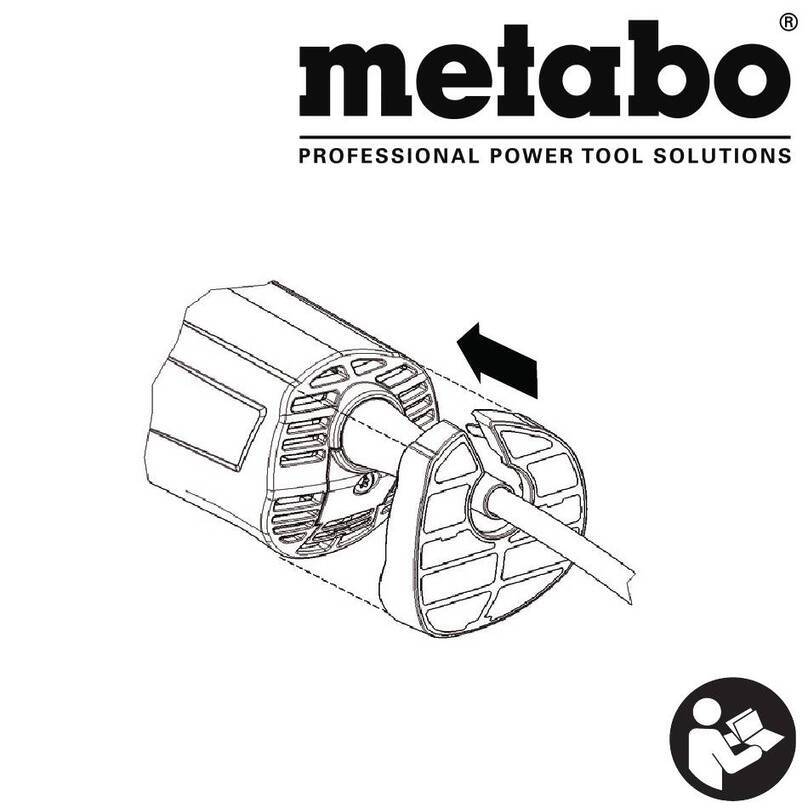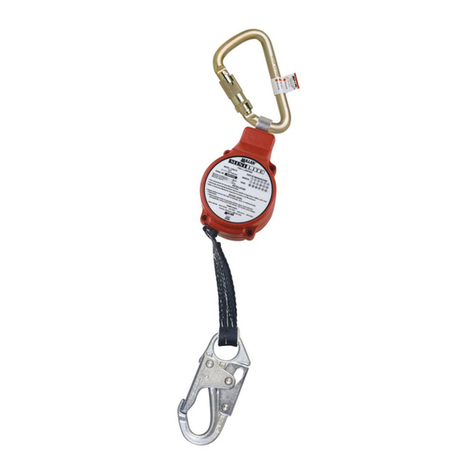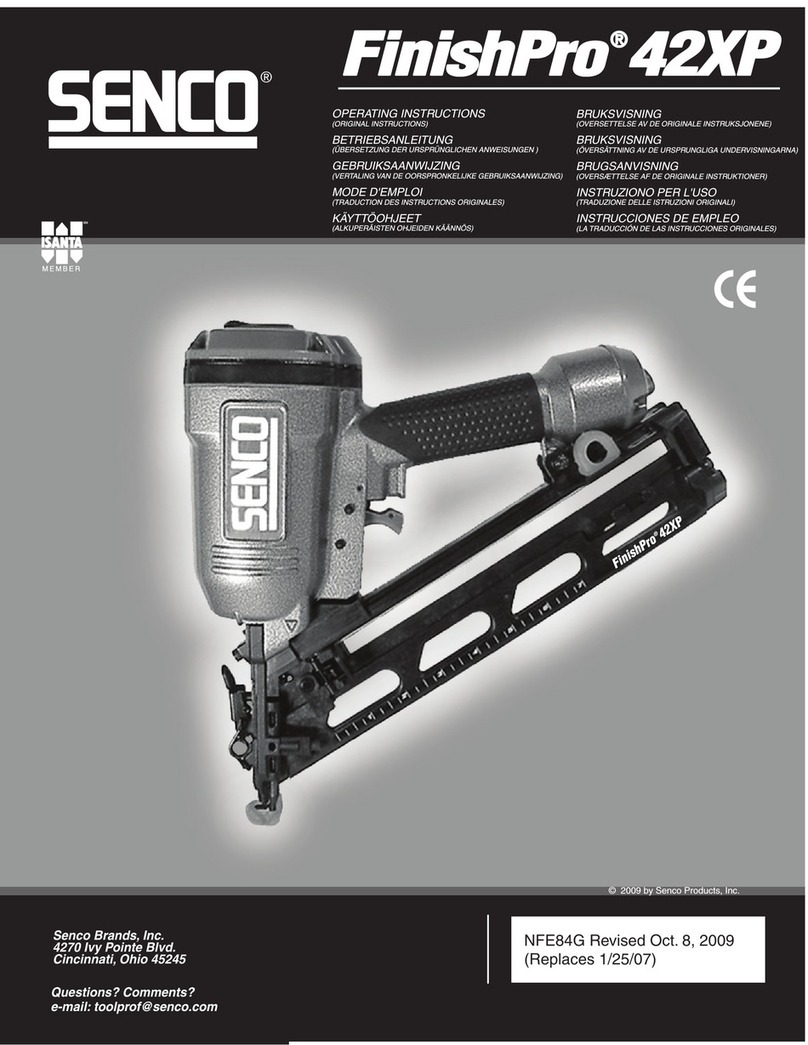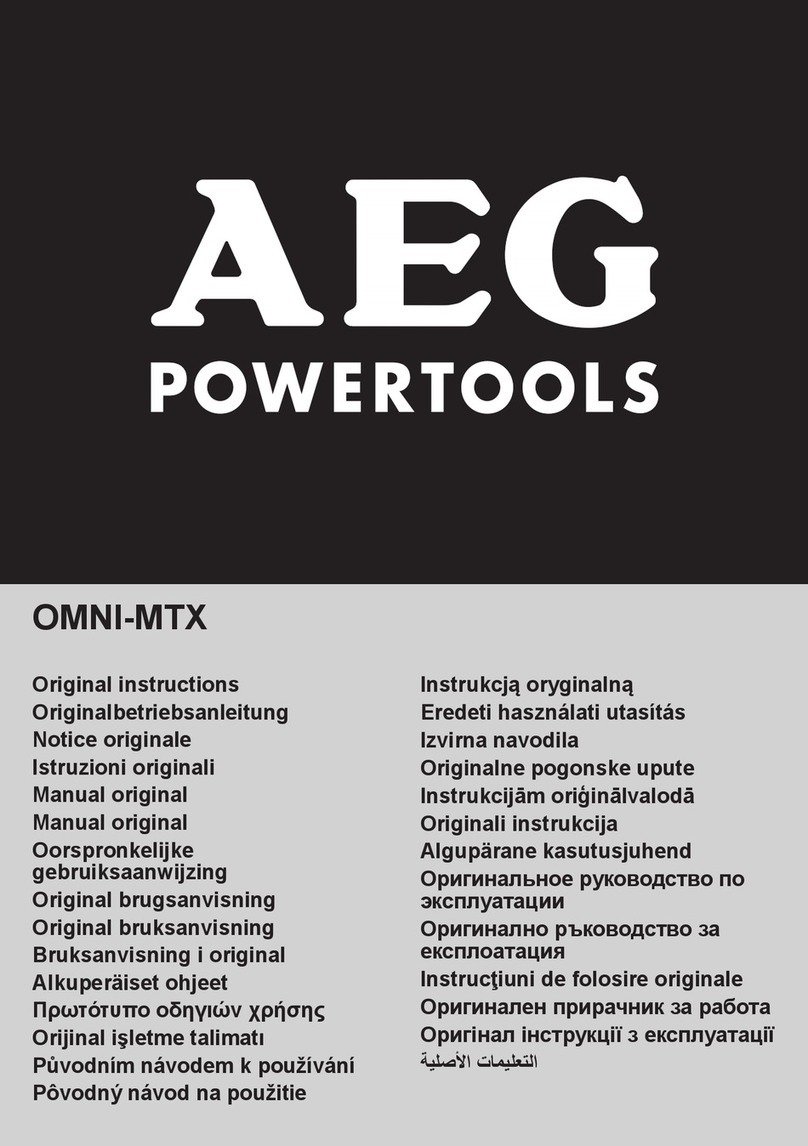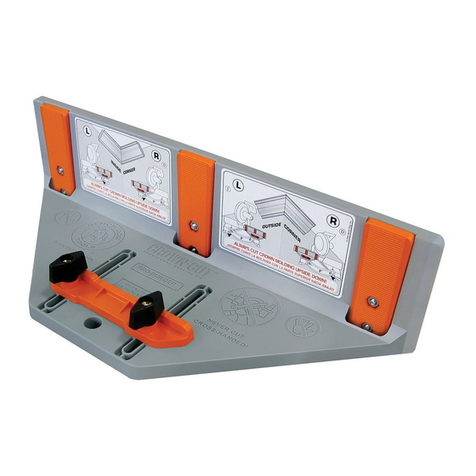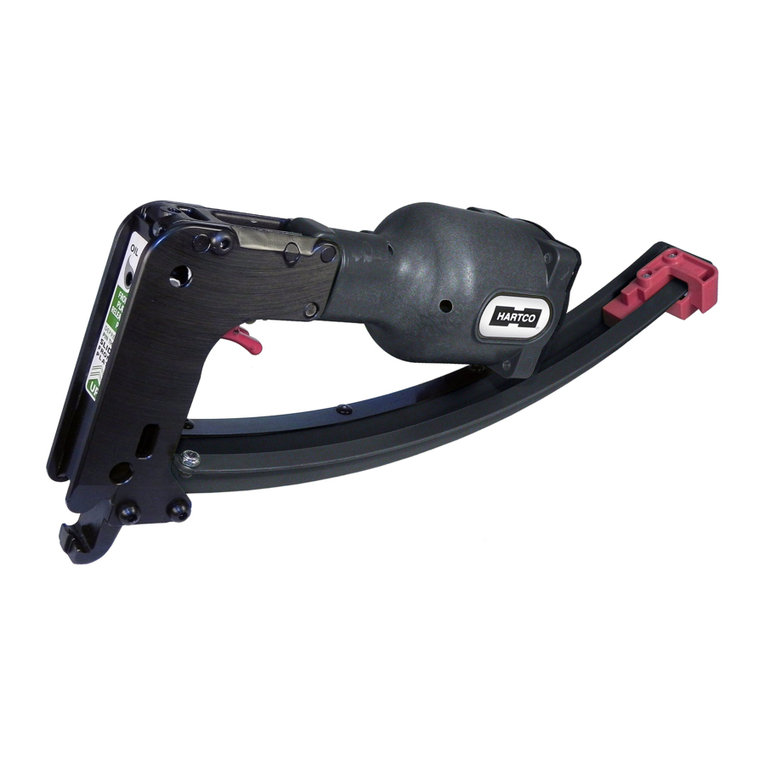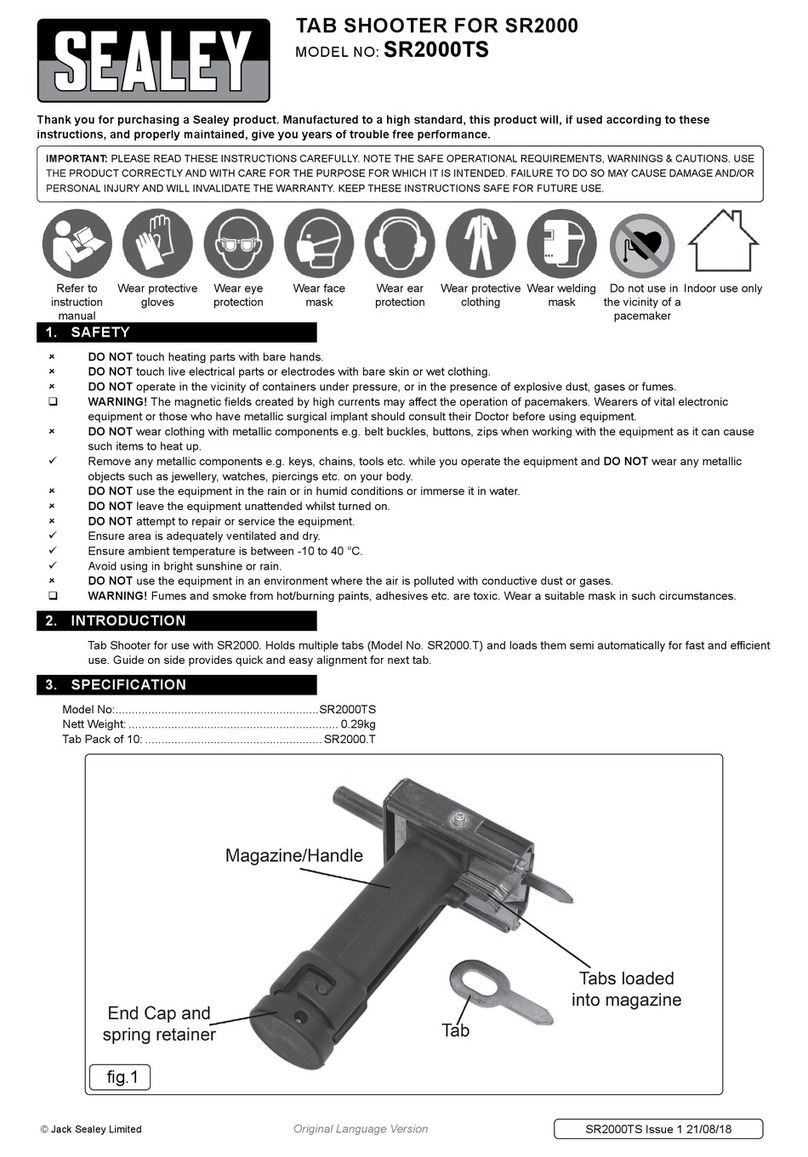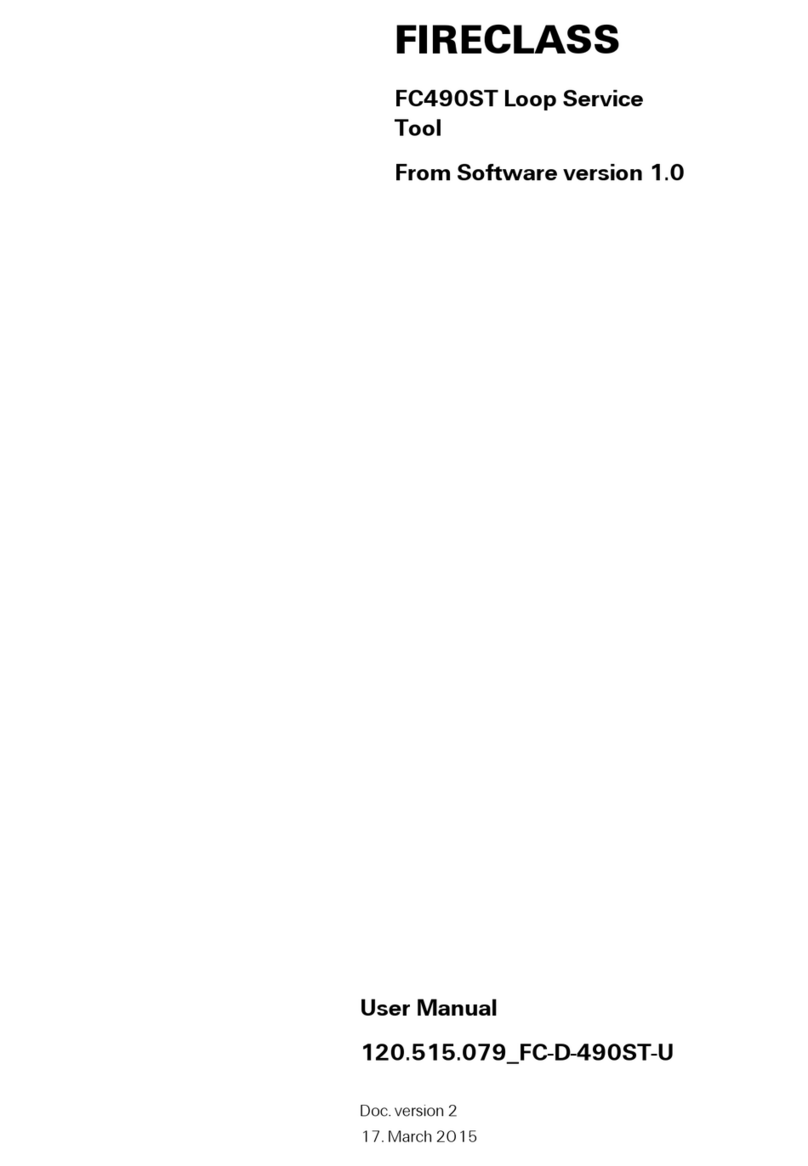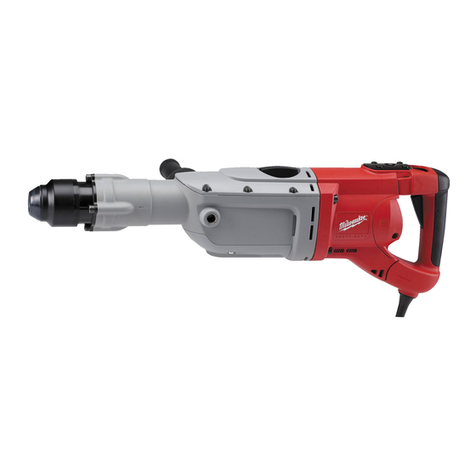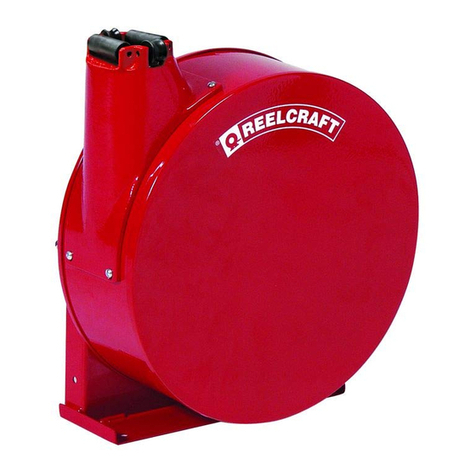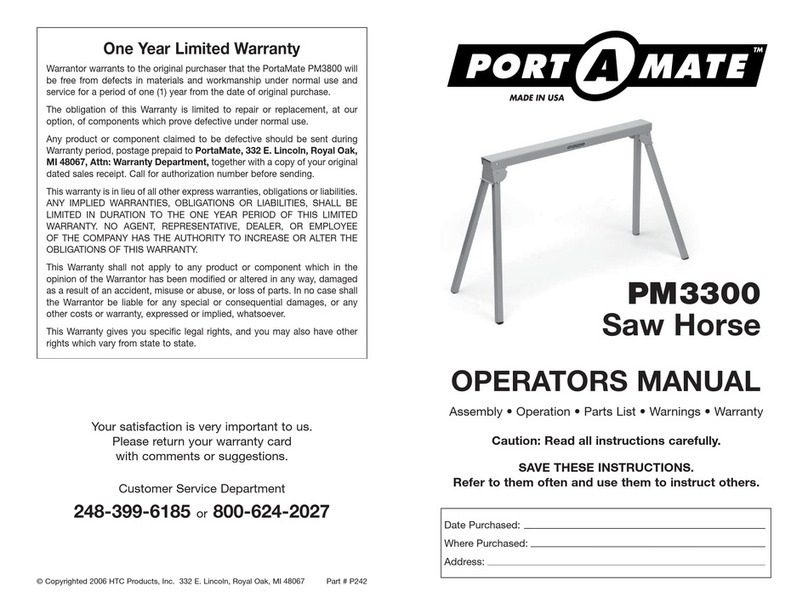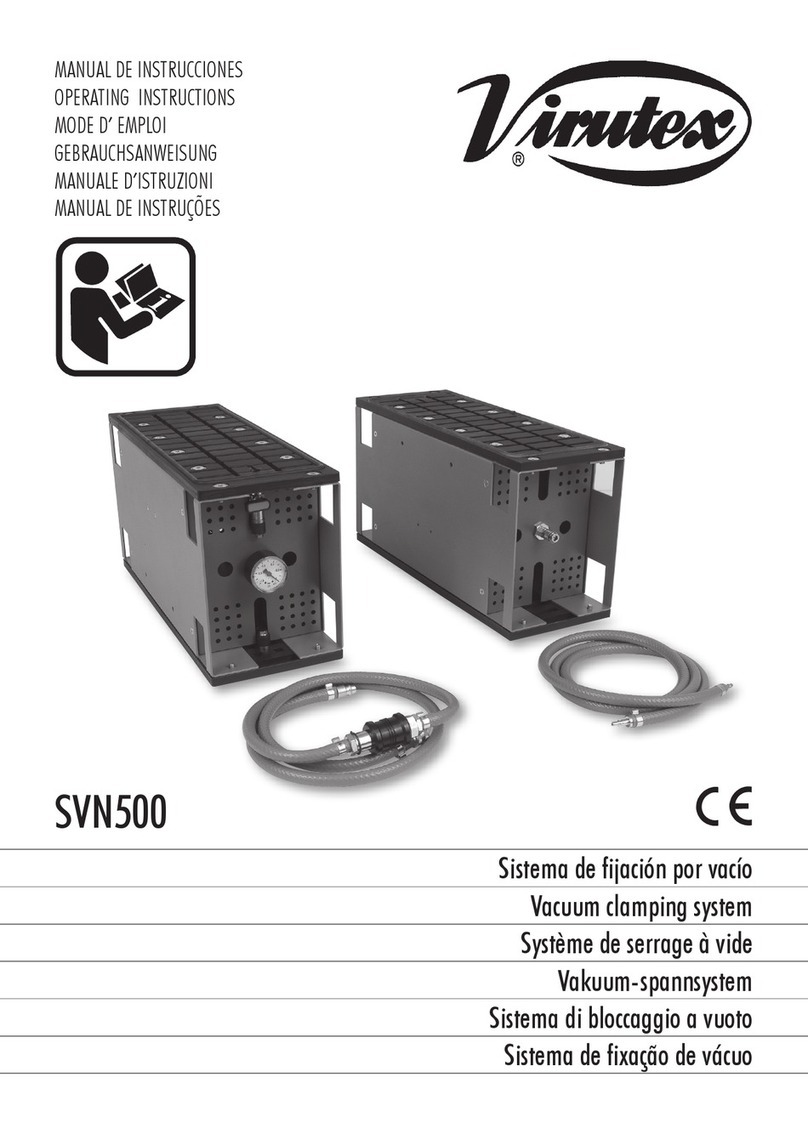Bihui Genesis BLFEVS User manual

1
BLFEVS Original instructions
Read before use
Symbols
The following are the icons that are used for the tool. Make sure you fully understand them before
using them.

2
Read the manual
Danger: Risk of injury and equipment damage.
General safety instructions for power tools
WARNING Read all safety instructions, instructions, illustrations and technical data
provided with this power tool. Failure to follow the instructions below may result in electric
shock, fire and / or serious injury.
Keep all safety and instructions for the future.
The term "power tool" used in the safety instructions refers to mains operated power tools (with
power cord) or to battery operated power tools (without power cord).
1) job security
a) Keep your work area clean and well lit. Disarray or unlit work areas can lead to accidents.
b) Do not work with the power tool in a potentially explosive environment in which flammable
liquids, gases or dusts are present. Power tools generate sparks that can ignite the dust or
vapours.
c) Keep children and other persons away while using the power tool. With distraction, you can
lose control of the power tool.
2) Electrical safety
a) The plug of the power tool must fit into the socket. The plug must not be changed in
anyway. Do not use adapter plugs together with electrically grounded power tools.
Unmodified plugs and matching sockets reduce the risk of electric shock.
b) Avoid body contact with grounded surfaces such as pipes, heaters, stoves, and
refrigerators. There is an increased risk of electric shock if your body is grounded.
c) Keep power tools away from rain or moisture. The penetration of water into a power tool
increases the risk of electric shock.
d) Do not misuse the power cord to carry the power tool, hang it up, or unplug it from the
power outlet. Keep the connection cable away from heat, oil, sharp edges or moving parts.
Damaged or entangled leads increase the risk of electric shock.
e) When working outdoors with a power tool, only use extension cables that are also
suitable for outdoor use. Using an extension cord suitable for outdoor use reduces the risk of
electric shock.
f) If operation of the power tool in a damp environment is unavoidable, use a residual
current device. Using a residual current circuit breaker reduces the risk of electric shock
3) safety of persons
a) Be attentive, pay attention to what you are doing and be reasonable about working with a
power tool. Do not use a power tool when you are tired or under the influence of drugs,
alcohol or medication. A moment of carelessness when using the power tool can cause serious
injury.

3
b) Wear personal protective equipment and always safety goggles. Wearing personal
protective equipment such as a dust mask, non-slip safety shoes, hard hat or ear protection,
depending on the type and use of the power tool, reduces the risk of personal injury.
c) Avoid unintentional start-up. Make sure that the power tool is switched off before
connecting, receiving or carrying it to the power supply and / or the battery. Keeping your
finger on the switch when you are wearing the power tool or plugging the power tool into power
can cause an accident.
d) Remove setting tools or wrenches before turning on the power tool. A tool or key located
in a rotating part of the power tool can cause injury.
e) Avoid an abnormal posture. Ensure a secure footing and maintain balance at all times.
This allows you to better control the power tool in unexpected situations.
f) Wear suitable clothing. Do not wear loose clothing or jewellery. Keep hair and clothing away
from moving parts. Loose clothing, jewellery or long hair can be caught by moving parts.
g) If dust extraction and collection equipment can be installed, they must be connected and
used properly. Using a dust extractor can reduce dust hazards.
h) Do not weigh yourself in false safety and do not overstep the safety rules for power tools,
even if you are familiar with the power tool after many uses. Careless action can lead to
serious injuries within fractions of a second.
4) Use and treatment of the power tool
a) Do not overload the power tool. Use the appropriate power tool for your work. With the
right power tool you work better and safer in the specified power range.
b) Do not use a power tool whose switch is defective. A power tool that can not be turned on or
off is dangerous and must be repaired.
c) Unplug the power cord and / or remove a detachable battery before making any
adjustments to the device, changing the tool bits, or putting the power tool away. This
precaution prevents the unintentional start of the power tool.
d) Store unused power tools out of the reach of children. Do not allow persons to use the
power tool that are unfamiliar or have not read these instructions. Power tools are
dangerous when used by inexperienced people.
e) Maintain power tools and insert tools with care. Check that moving parts are working
properly and do not jam, that parts are broken or damaged enough to impair the
functioning of the power tool. Have damaged parts repaired before using the power tool.
Many accidents are caused by badly maintained power tools.
f) Keep cutting tools sharp and clean. Carefully maintained cutting tools with sharpcutting edges
become less jammed and easier to guide.
g) Use power tools, accessories, tools etc. according to these instructions. Take intoaccount
the working conditions and the activity to be performed. The use of power tools for other
than intended applications can lead to dangerous situations.
h) Keep handles and grips dry, clean and free of oil and grease. Slippery handles and gripping
surfaces do not allow safe operation and control of the power tool in unforeseen situations.
5) Use and treatment of the cordless tool

4
a) Charge the batteries only with chargers recommended by the manufacturer. A charger
suitable for a particular type of battery may cause a fire when used with other batteries.
b) Use only the appropriate batteries in the power tools. Use of other batteries may cause injury
or fire.
h) Keep handles and grips dry, clean and free of oil and grease. Slippery handles and gripping
surfaces do not allow safe operation and control of the power tool in unforeseen situations.
5) Use and treatment of the cordless tool
a) Charge the batteries only with chargers recommended by the manufacturer. A charger
suitable for a particular type of battery may cause a fire when used with other batteries.
b) Use only the appropriate batteries in the power tools. Use of other batteries may cause injury
or fire. 3
c) Keep the unused battery away from paper clips, coins, keys, nails, screws, or other small
metal objects that could cause the contacts to bridge. A short circuit between the battery
contacts can cause burns or fire.
d) If used incorrectly, liquid may leak from the battery. Avoid contact with it. In case of
accidental contact, rinse with water. If the fluid gets into your eyes, seek additional
medical attention. Leaking battery fluid may cause skin irritation or burns.
e) Do not use a damaged or modified battery. Damaged or altered batteries can behave
unpredictably and cause fire, explosion or injury.
f) Do not expose a battery to fire or high temperatures. Fire or temperatures over 130 ° C can
cause an explosion.
g) Follow all charging instructions and never charge the battery or the cordless tool
outsidethe temperature range specified in the operating instructions. Incorrect charging or
charging outside the permitted temperature range can destroy the battery and increase the risk
of fire.
6) service
a) Only have your power tool repaired by qualified personnel and only with original spare
parts. This ensures that the safety of the power tool is maintained.
b) Never wait for damaged batteries. All battery maintenance should only be done by the
manufacturer or authorized service centres.
Follow the instructions for lubricating and changing accessories.

5
Instructions for use of Vacuum lifter
1. Always make sure that you have a firm footing. Make sure that there are no people under the
unit when using the unit in a high location.
2. Do not carry heavy objects weighing more than 70 kg.
3. Keep the working surface of the object to be transported flat and free of debris on the surface to
ensure good sealing performance during machine operation.
4. The battery is sufficiently charged to ensure that operation is not interrupted due to insufficient
power.
5. Make sure that the goods can be brought to their destination in a good environment and are not
damaged by environmental damage.
KEEP INSTRUCTIONS
WARNING: Do not follow the relevant product safety rules to familiarize yourself with the
product (experience with repeated use). Do not follow the relevant product safety rules to
familiarize yourself with the product (experience with repeated use).
Improper use or failure to observe the safety instructions in the manual may result in serious injury.

6
IMPORTANT SAFETY INSTRUCTIONS FOR THE BATTERY CASSETTE
Before using the battery, read all instructions and warnings on the charger, the battery, and the
product that uses the battery.
- Do not disassemble the battery.
- If the operating time has become too short, stop operation immediately. There is a risk of
overheating, burns and even explosion.
-If electrolyte gets in your eyes, rinse with clean water and seek medical attention immediately. This
can lead to vision loss.
- Do not short the batteries:
(1) Do not touch the terminals with conductive material.
(2) Do not store the battery in a container with other metal objects such as nails, coins, etc.
(3) Do not expose the battery to water or rain.
A battery short circuit can cause a strong current flow, overheating, possible burns and even a
malfunction
- Do not store the device and the battery in places where the temperature can reach or exceed 50
° C.
- Do not burn the battery even if it is badly damaged or worn out completely. The battery can
explode in case of fire.
- Be careful not to drop or hit the battery.
-Do not use damaged batteries.
- The battery is subject to the dangerous goods laws. Any transfer by a third party or carrier should
strictly adhere to the packaging and label requirements. Please read the detailed rules for the
local market and pay attention to them. Please protect it with a knock and fix the battery firmly to
avoid movement of the packaging.
- Always follow the local laws for the disposal of used batteries.
- Make sure that the battery is used for a particular tool. Improper or misuse may result in fire,
overheating, explosion or electrolyte leakage.

7
KEEP INSTRUCTIONS
ATTENTION: Please only use the original Kinty battery. Any use of a non-original or new battery
can cause an explosion, even possible fire, personal injury, or property damage. And Kinty's
warranty terms will not apply in this case.
Tips for getting the maximum battery life
- Charge the battery cartridge before you have completely discharged it. Stop working and charge
the battery if you notice less tool power.
- Never charge a fully charged battery cartridge. By overcharging the charge shortens battery life.
- Charge the battery with the room temperature at 10 ° C - 40 ° C. Leave a hot battery cool before
loading.
- Use the battery pack under the ambient conditions of 10 ° C -40 ° C.
- Charge the battery every six months if you do not use it for a long time.
Application
The device is suitable for handling wood, metal, glass, plastic, stone and other materials The
adsorption surface of the object to be transported must be level, free of foreign bodies and of a
certain smoothness.
ATTENTION : Please use only the right battery / charger as above. Any use of improper
batteries / chargers may cause injury or even fire.

8
1. switch 2. handle 3. battery 4. battery button 5. bottom plate 6. sealing ring
7. Pressure release key 8. Pressure relief valve 9. Limit pin 10. Knob
Specifications
Model .
BLFEVS
Nominal voltage
14.4V D.C
Vacuum pressure
-55Kpa
Charging time
1 Hour
Noise
Vibration
1.68m/s2 K=1.5m/s2
Batteries

9
C18650P-2000mAh, Li-ion, 3.7V, 2000mAh
Charger approved according to
EN60335-2-29
Modell: XZ0550-0400WU;
Input: 100-240VAC, 50-60Hz, 0.3A
Output: 14.4 VDC, 2000mA
Lift weight(MAX)
70 Kg
•Due to our continuous research and development program, the Specifications are subject to change without
notice.
•Specifications and battery cartridges may vary from country to country.
•The weight may change due to the battery.
- The specified total vibration values and the specified noise emission values have been measured
according to a standardized test method and can be used to compare one electric tool with another.
- The stated total vibration values and the specified noise emission values can also be used for a
preliminary estimation of the load.
Warning:
-The vibration and noise emissions may differ during the actual use of the power tool from the indicated values,
depending on the manner in which the power tool is used, in particular, which type of workpiece is being
processed.
- Try to minimize the impact of vibration and noise. Exemplary measures to reduce vibration exposure
include wearing gloves while using the tool and limiting working time. In this case, all parts of the operating cycle
are to be considered (for example, times when the power tool is switched off and those in which it is switched
on, but runs without load).
The remaining battery power
Only for the battery with indicator light
11. Battery 12. capacity indicator button

10
Press the button 11 to turn on the battery capacity indicator 12. The number of lights shows the
remaining power.
If the light turns red, charge the battery in case of damage.
DESCRIPTION OF OPERATION
CAUTION: Always make sure the device is turned off and the battery is removed before
adjusting or checking the device.
Inserting or removing the battery
⚫Always turn off switch 1 of the tool before inserting or removing the battery. ⚫ Press
and hold the battery button 4 to pull the battery 3 out of the tool.

11
⚫To insert the batteries 3, align the tabs of the batteries 3 with the grooves in the
handle holder
13 and slide them in. Be sure to insert it completely until the push button 16 is locked by the
battery button 4. Batteries 3 must be fully installed. Otherwise, it could accidentally fall out of
the device and hurt you or others.
Do not use force when inserting the battery. If the cassette does not slide in easily, it will not
fit properly.
Adsorption of transported objects
•Check the surface of the object to be lifted to make sure that it is flat and free of particles and
other materials, and then place the tool in the center of the object to be lifted or in its center
of gravity.
•Evaluate the weight of the object to be lifted, being careful not to exceed XX kg, otherwise it
will be dangerous.
•Hold the handle 2 by hand and press it downwards slightly so that the sealing ring 6 rests
against the surface of the lifting object without a gap.

12
Operating
•Hold the handle 2 firmly, push it down properly and then press the button on the switch 1
with your thumb. The tool starts to work.
•When the tool is working, you will hear a low noise from the vacuum pump and feel
thevibration.
•When you hear the noise of the vacuum pump, you can see that the sealing ring 6 of
themachine is compressed by the action of vacuum, or you can feel the machine drop by
hand. Get the work request.
Lift objects
•Pay attention to the center of gravity and lift the weight upwards. At this time, the switch 1
can not be released.
•After bringing the item to the specified position, carefully lower the weight and the handling
is complete.

13
•Press the 1 button again
with your thumb to relax. The
switch 1 of the switch
rebounds, the power supply
is switched off and the
vacuum pump stops working.
Release vacuum
pressure
•Due to the function of the seal, the vacuum pump maintains the vacuum after it has stopped
working, and the machine must be unloaded before it can be removed.
•Press the arrow to release the button 10 and the limit pin 9 will retract.
Turn off the power

14
•Pull the pressure relief key 7 upwards. At this time, the pressure relief valve 8 is opened and
the negative pressure released.
Removal the tool
• After the pressure relief is between the tool and the object to be lifted no more suction and the
machine can be removed.

15
Pressure relief key return
• After the pressure is released, the pressure release key 7 is released, and under the joint
action of the torsion spring 21 and the spring 44, the limit pin 9 and the knob 10 return to the
position, and the pressure release key 7 is held.
CAUTION: The pressure relief plug 8 should be clean, tidy and secure.

16
Charging
•The batteries 3 are inserted into the charger 17 and charged for one hour.
•Check the battery level after charging is complete.
MAINTENANCE
ATTENTION:
⚫Always make sure that the power is off and the battery has been removed before
performing any inspection or maintenance. ⚫ Never use petrol, thinner, alcohol or similar. This
can lead to discoloration, deformation or cracks.

17
⚫Check the vacuum cleaner for dust accumulation. If dust is present, blow off the dust with
compressed air.
⚫Do not remove dust with liquids or other chemical solvents, as this may damage the
vacuum pump.
OPTIONAL ACCESSORIES
ATTENTION :
• This accessory or accessory is recommended for use with your device specified in this manual.
Using other accessories or attachments may result in personal injury. Only use accessories or
accessories for the stated purpose.
For more information about this accessory, contact Kinty.
⚫Various original batteries and chargers from Kinty
⚫Vacuum pump
⚫Sealing ring ⚫ Carrying bag made of plastic
•NOTE:
•Some items in the list may be included as standard accessories. They can vary from
country to country.

18
Shaft-side drawing and main parts list

19
Do not dispose of electrical appliances in the household waste.
According to European Directive 2012/19 / EU on waste electrical and electronic
equipment and transposition into national law, used electrical appliances must be
collected separately and recycled in an environmentally sound manner.
Recycling alternative to the return request:
As an alternative, the owner of the electrical appliance is obliged to cooperate with the proper
utilization in the case of the assignment of property instead of return. For this purpose,
the old device can also be left to a take-back point, which carries out a disposal within
the meaning of the National Closed Substance Cycle and Waste Management Act.
Not included are accessories and accessories without electrical components attached to old
appliances.
Battery packs should be removed from the unit before disposal.
Li-ion:
Do not dispose of tools or battery packs with household waste! It is essential to comply with the
European directives for electrical appliances, batteries and accumulators as well as waste
batteries and accumulators and to carry them out according to the laws and regulations. Off-
site electrical equipment and battery packs must be sorted and sent to a recycling agency
that complies with environmental regulations.
EC declaration of conformity We
hereby declare,
that the machine described below, due to its design and construction
as well as in the version that we have placed on the market, complies
with the relevant basic safety and health requirements of the EC
directives.
In the case of a modification of the machine not agreed with us, this declaration
will lose its validity.
Name of the machine:
Vacuum lifter
Model:
BLFEVS
Trademark:
N/A
Machine No:
N/A

20
Voltage:
14.4V D.C
Guaranteed
Sound power level 60dB(A)
Relevant EC directives: 2006/42/EG 2014/30/EU 2011/65/EU
Applied harmonized standards: EN 62841-1:2015
Manufacturer's signature / place / date:
Documentation Agent:
Table of contents
Other Bihui Tools manuals


